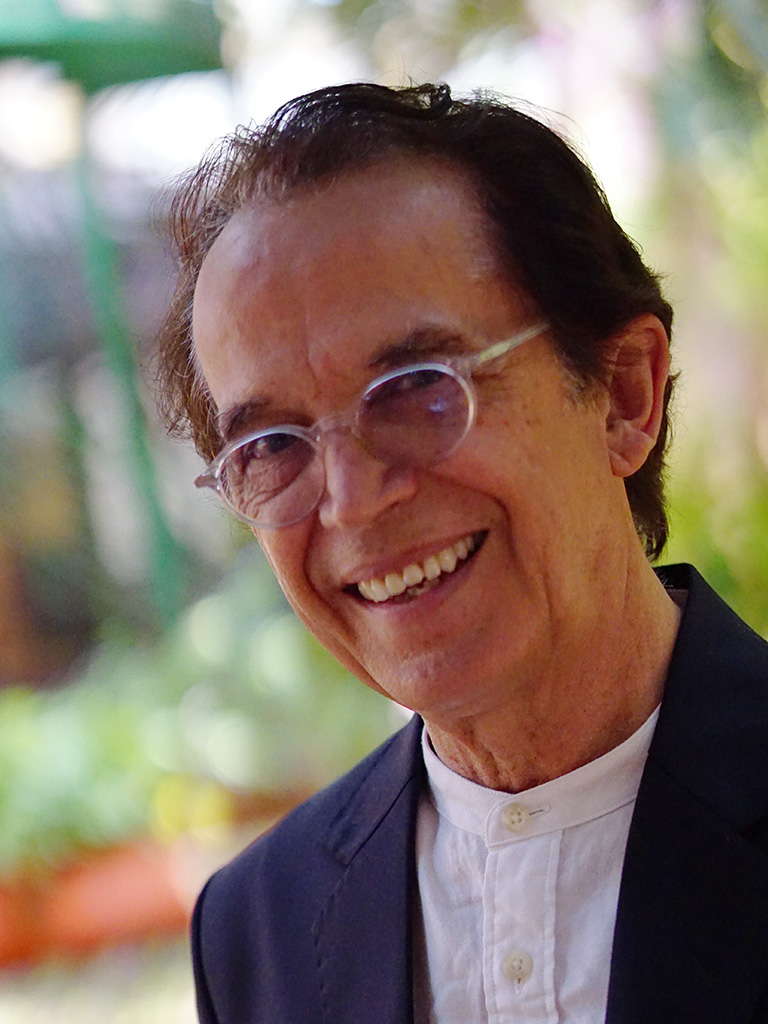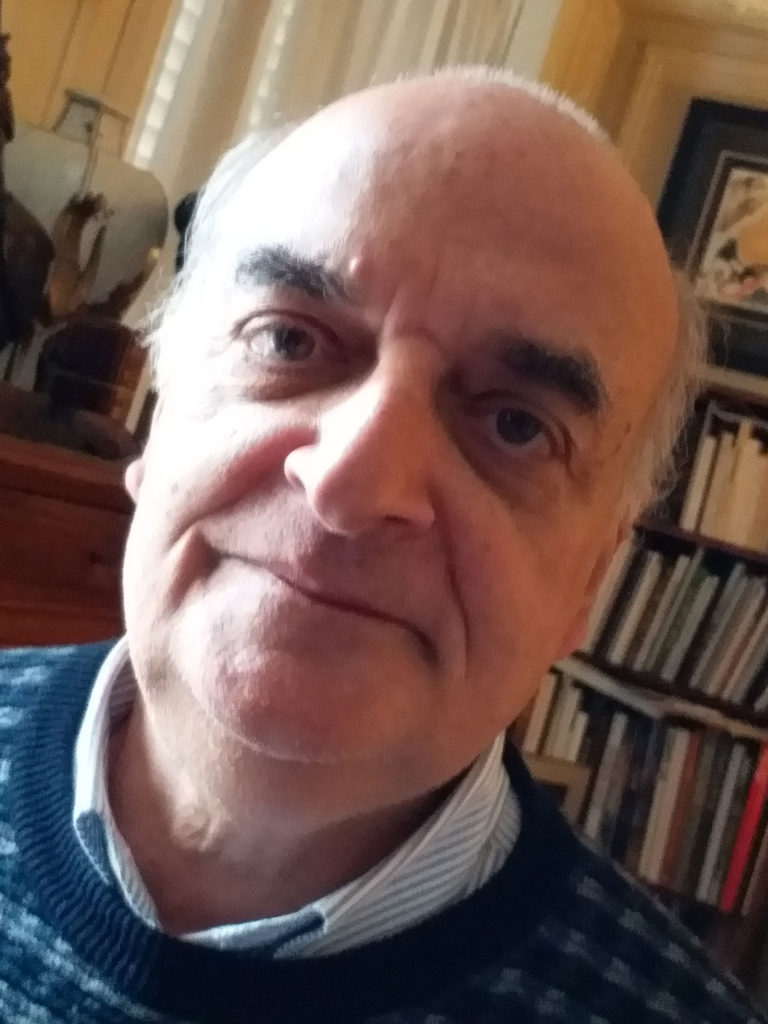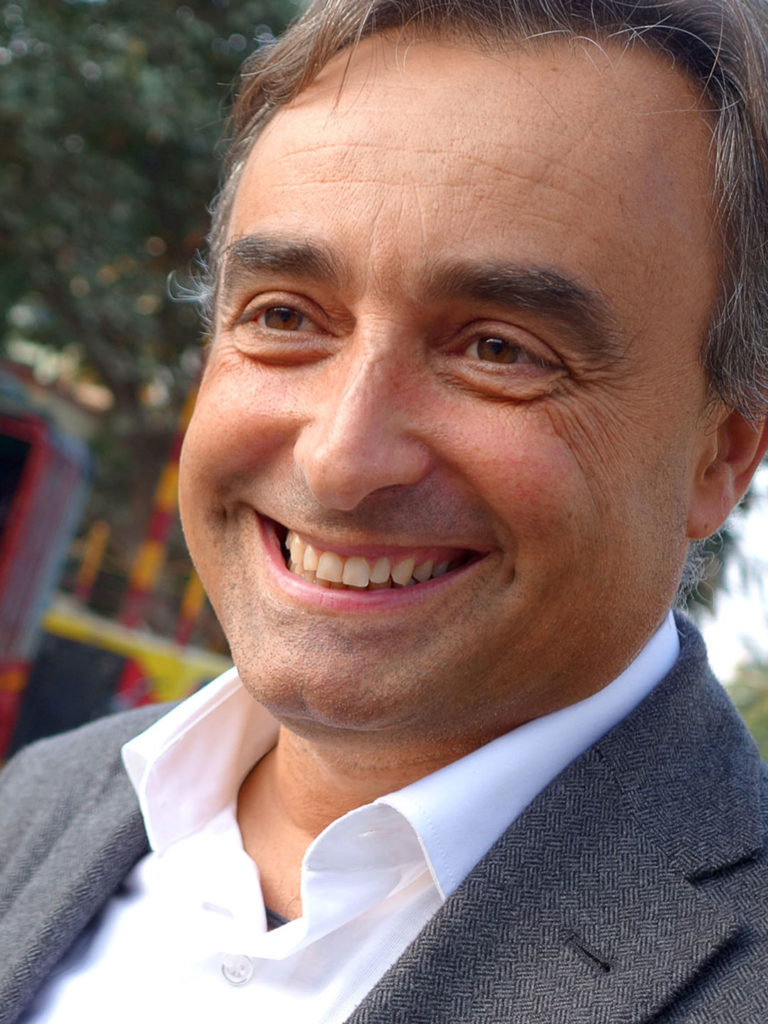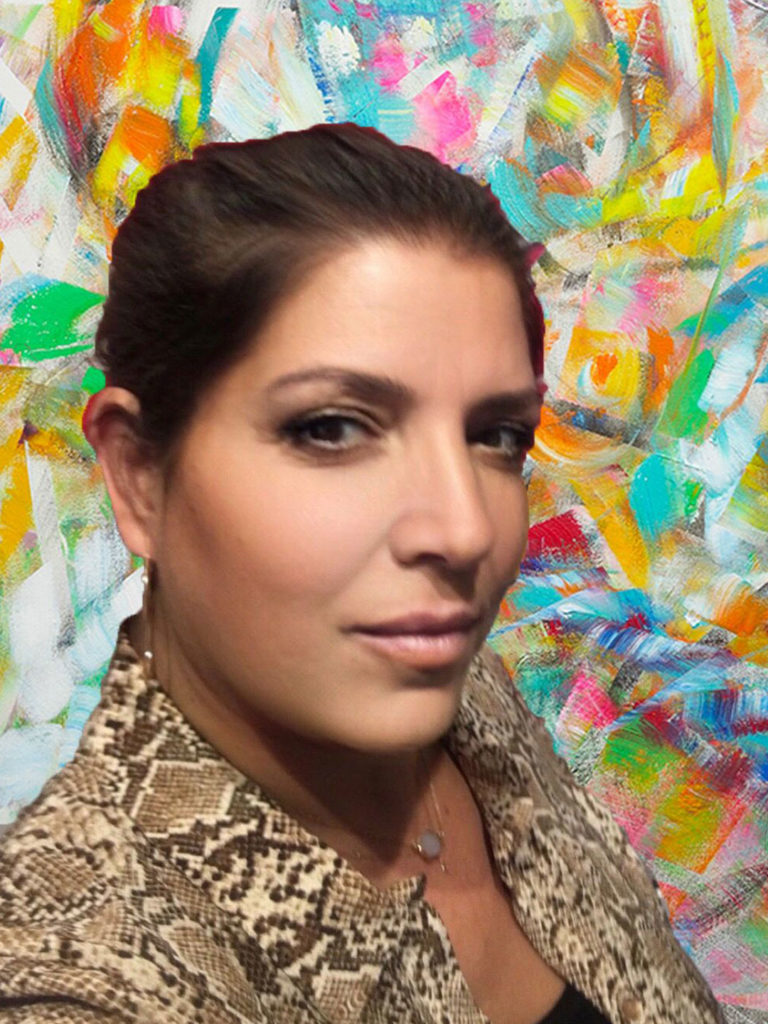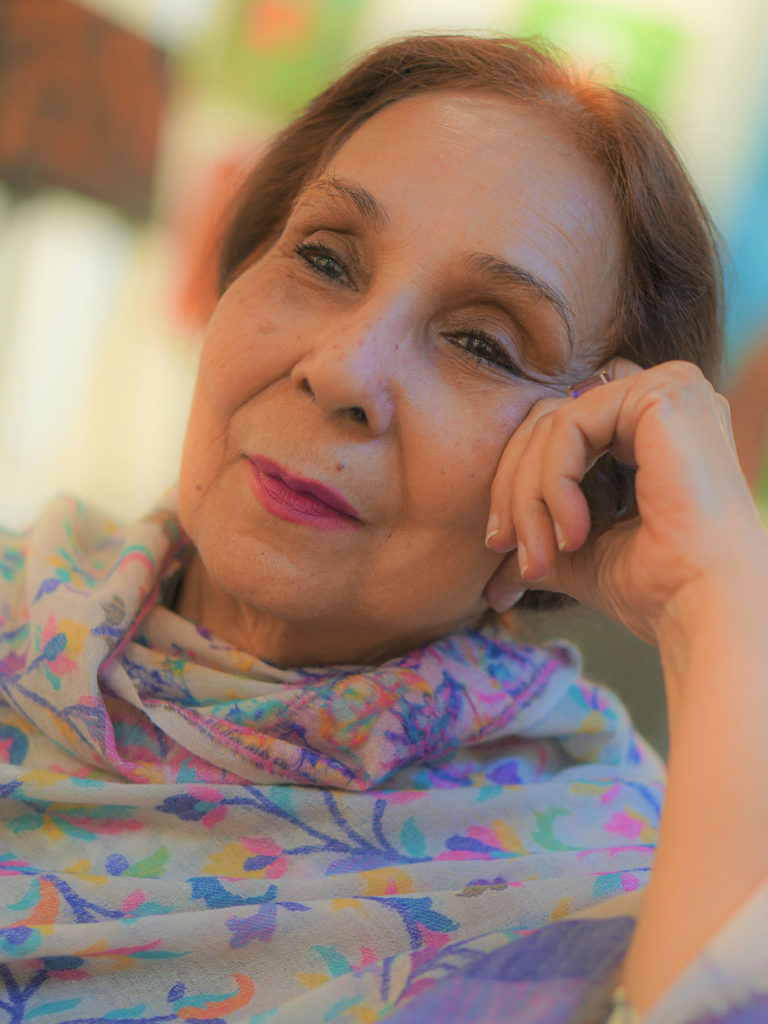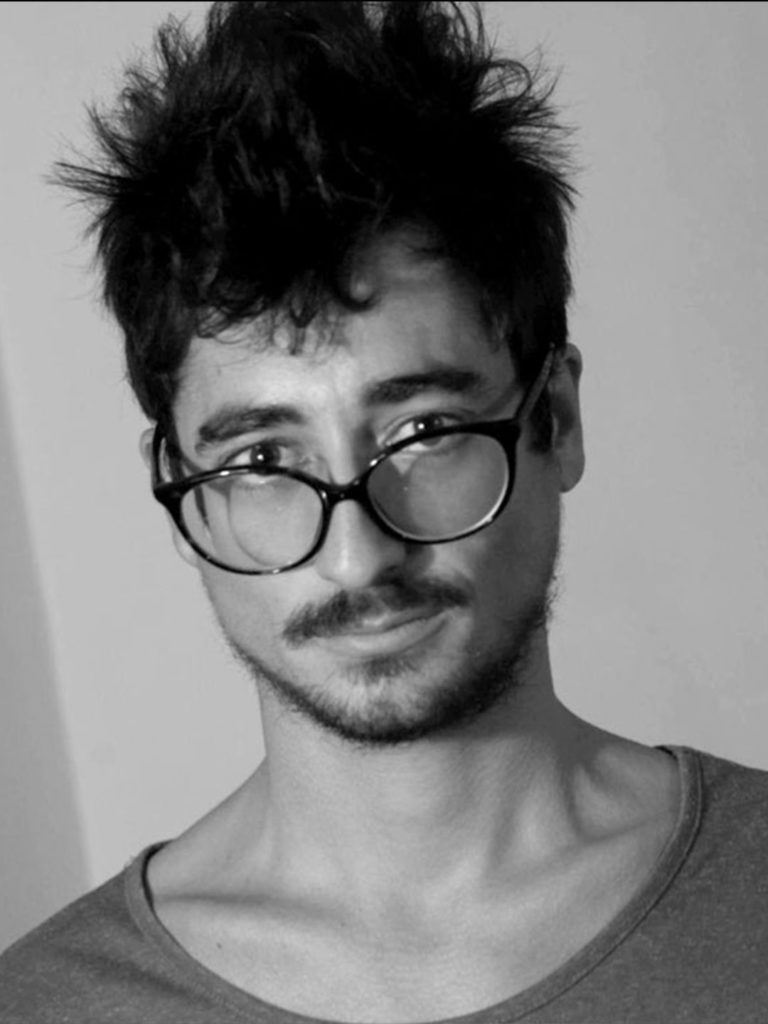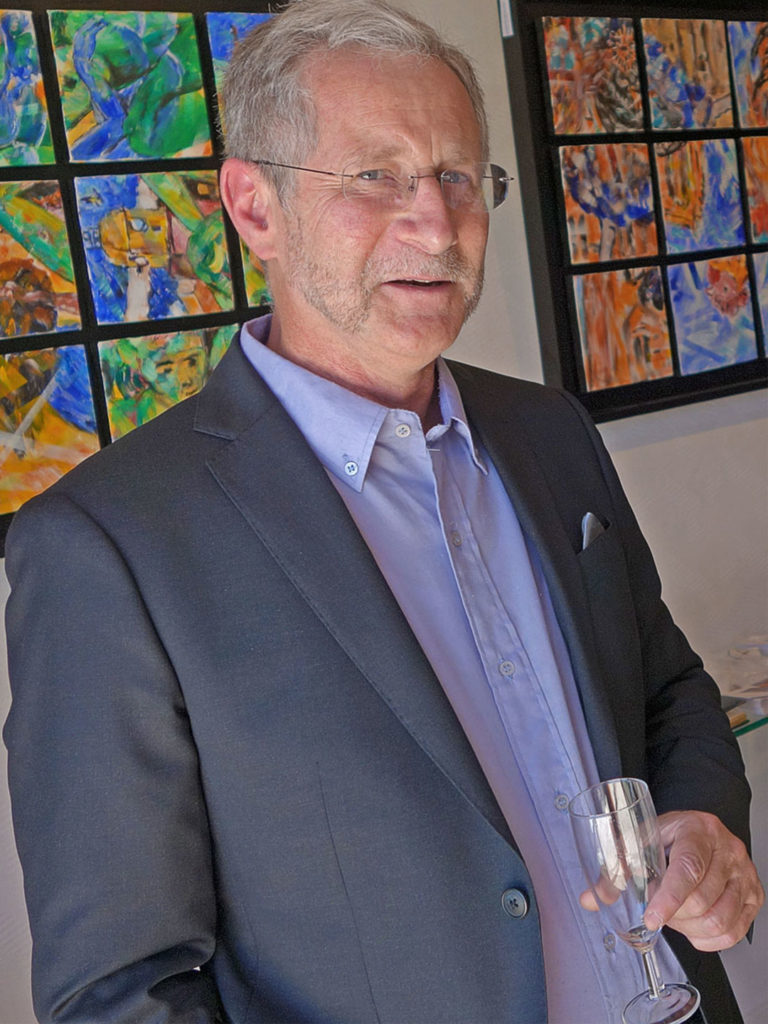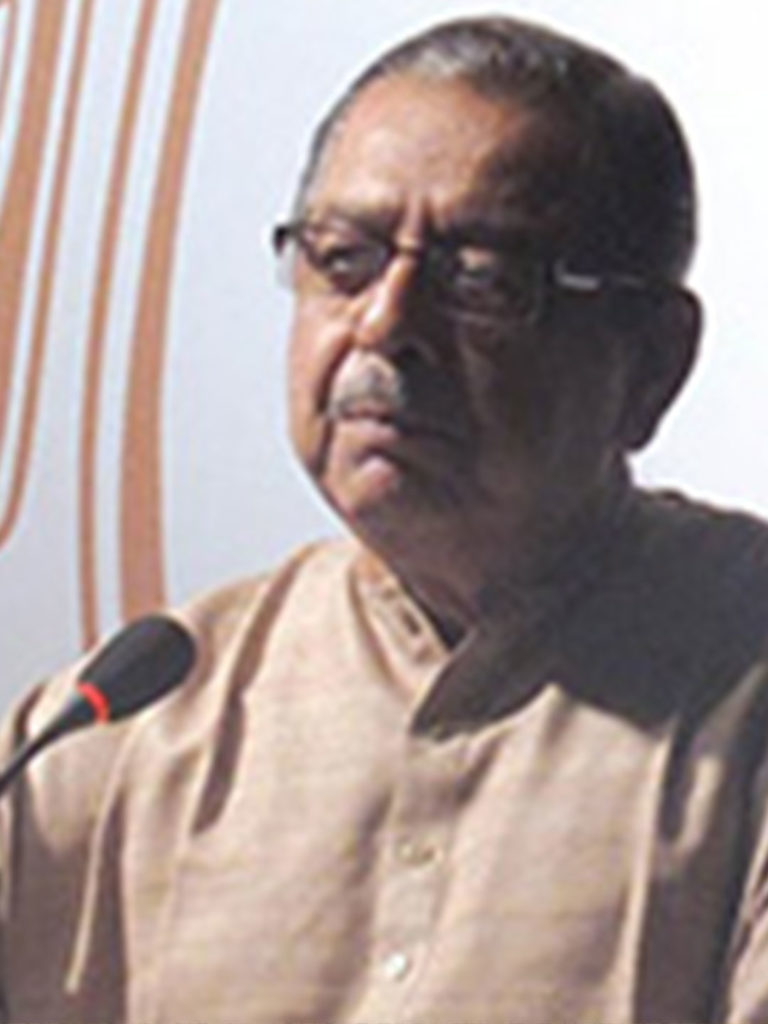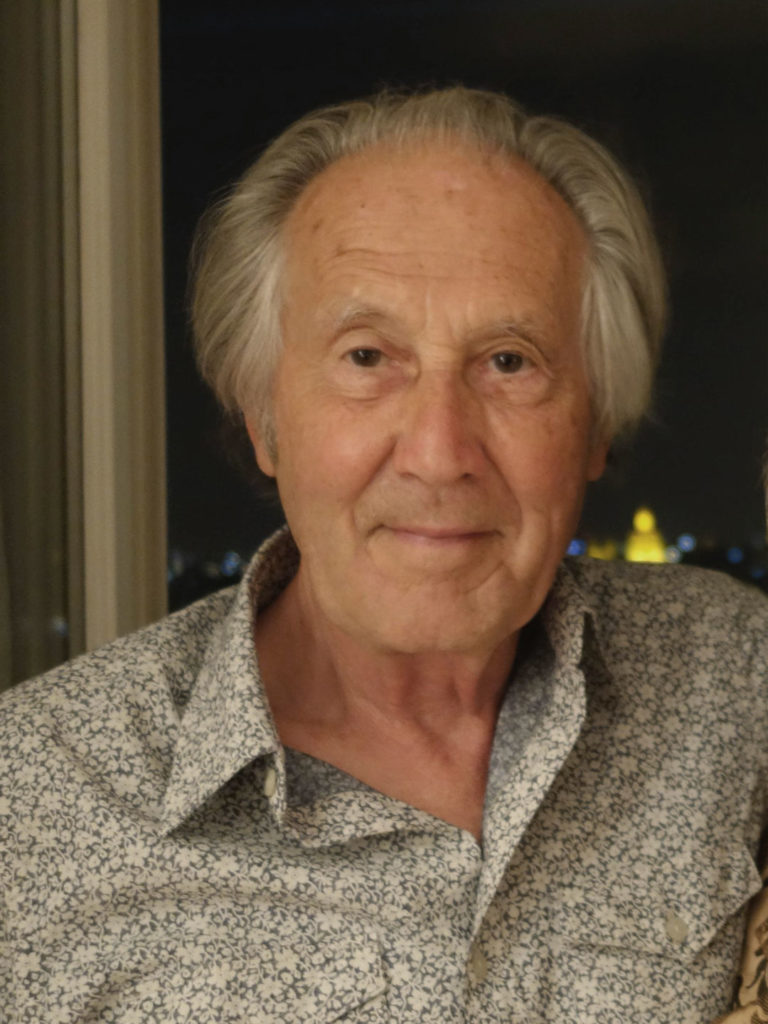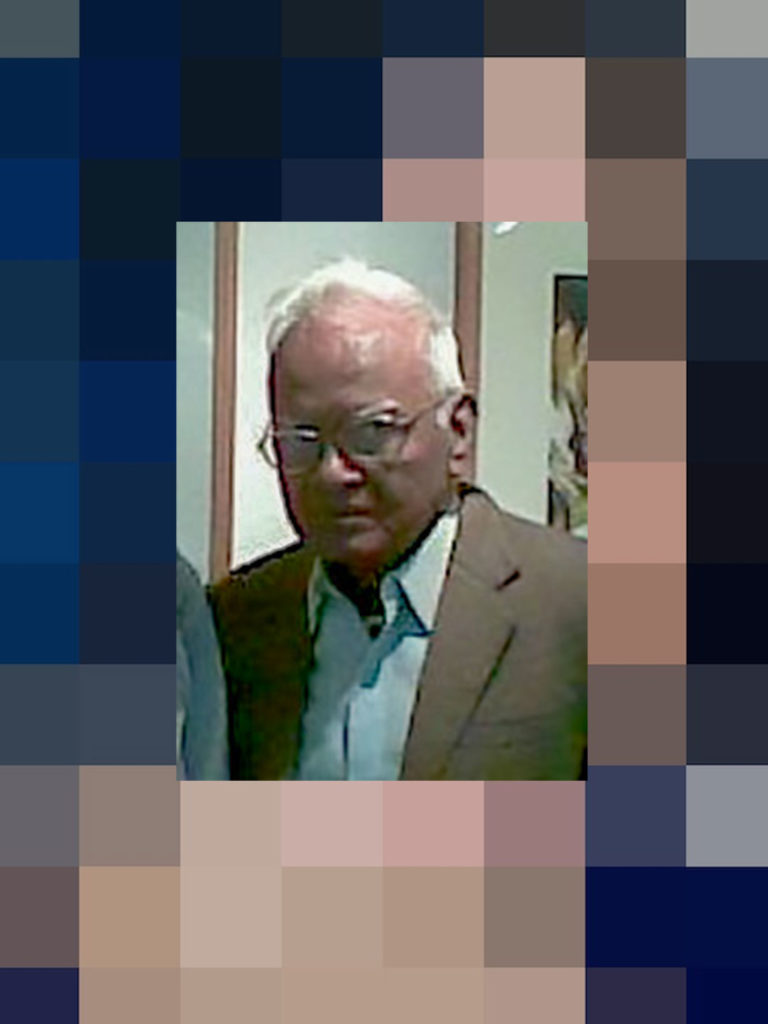
Una Chaudhuri
Professor of English, Drama, and Environmental Studies, New York University, New York, USA
“To encounter Shombit Sen’s Gesturist paintings is to be immediately plunged into an immense field of form and color. Very soon, however, something else begins to happen: form and color begin to gather themselves into intensities, each contained within its canvas. The force of these intensities seems to lift the paintings off the background-the page or the wall-or, alternatively, they transform before your eyes from painted surfaces to dynamic depths: as if they’ve punched holes into the wall and revealed a pulsing, prismatic world beyond.
Sen’s term for this art-Gesturism-is suggestive rather than descriptive. It evokes a sense of embodied movement linked to deeply experienced meaning. It conjures a mode of creation that is as familiar as your fingertips yet as compelling as a mystic code. The works appear to register some combination of movement and meaning that has its origins in the artist’s instinct and its destination in the viewer’s soul. The paintings are the pathways for that journey, or perhaps they are the journey itself.
To join Sen on this journey is to accept an invitation to see the world as a process of ceaseless emergence, of hidden reality plunging into visibility. An invitation to be present as forms-faces, bodies, dances, landscapes, humans, animals-arise, enter into a frenzy of existence and transformation, and then subside. These forms are simple, generous, vivid: they give themselves to the viewer with great energy, holding nothing back. They animate the viewer, sharing their own life force with those in their orbit.
The gathered intensities-the paintings-gather further into groups or series, like notes in harmony or voices in conversation. This is the map that accompanies the invitation you felt when you first encounter the paintings. Or perhaps it is not so much a map as a structure: the architecture for your stay in this vibrant world. It is a vibratory architecture-it sends your eye back and forth, from painting to painting and back again. If you’re with “Colours of the Dance,” the vibration will teach you how to tango, whirl you in a waltz! If you’re in the orbit of “Love and Force,” the vibration will awaken your animal spirit, want to make you toss your head and flash your eyes! Other sequences are quieter, more contemplative, opening up inner and outer landscapes for you to rest within. They share with you what the artist loves: les paysages Français, la femme exquise.
These are gorgeous, dazzling paintings. They exude a vibrant presence that is both energizing and calming. They allow you to travel with one who views the world with enormous love and is blessed with the personal assurance-and the great artistic talent-to register that vision and share it with others. The paintings feel like an unexpected gift, something the world hands you on a good day and allows you to enjoy forever!



